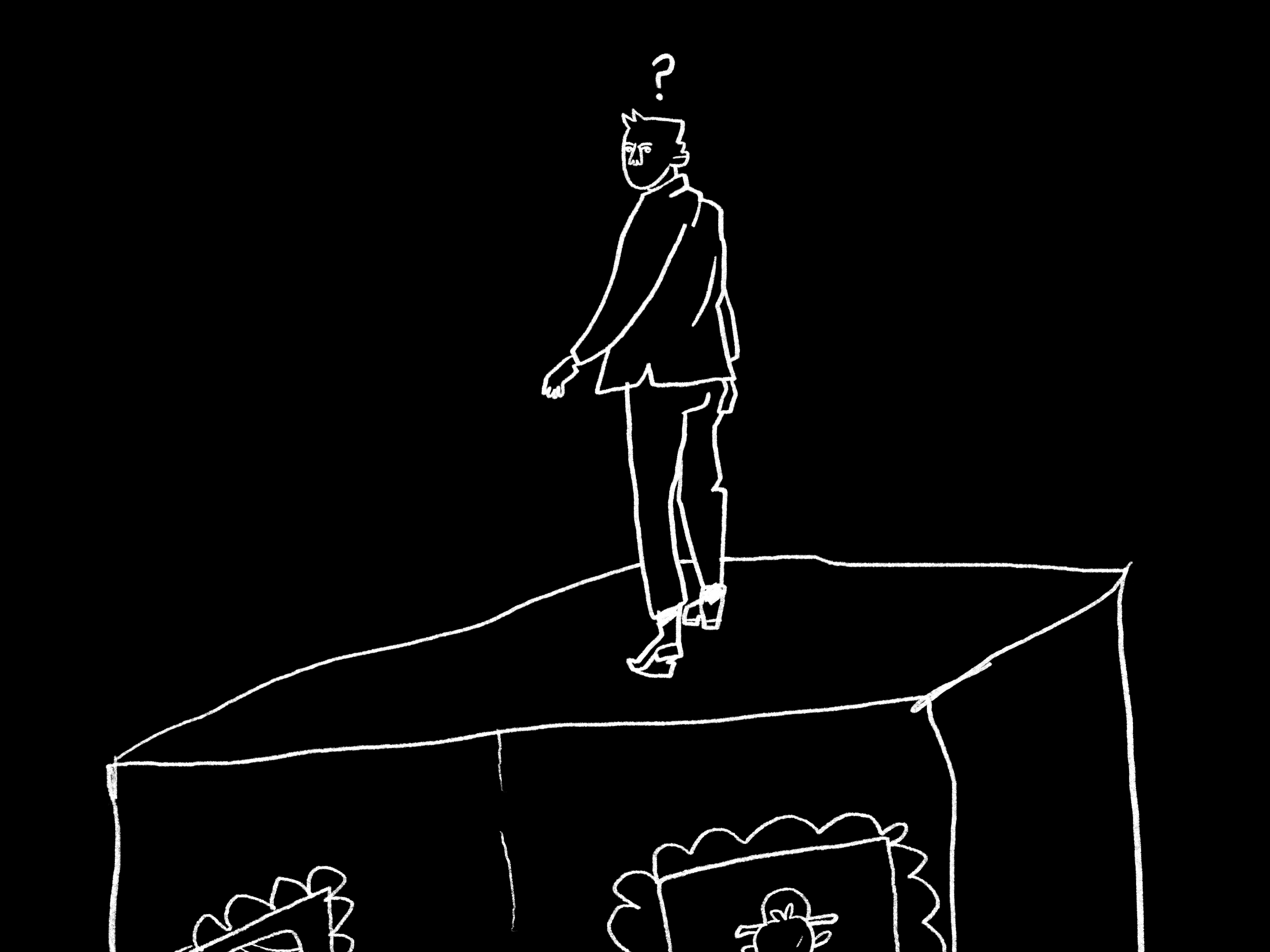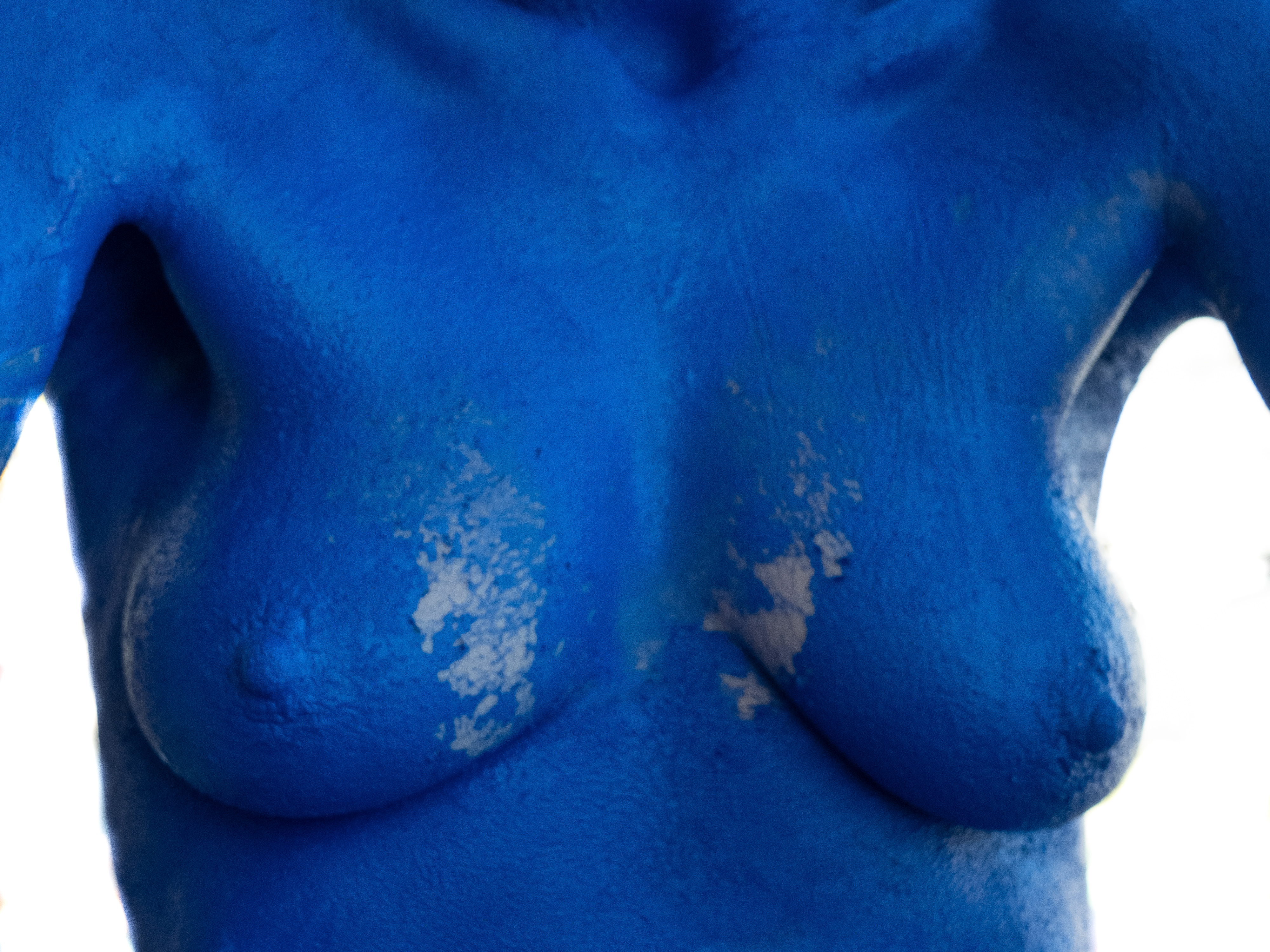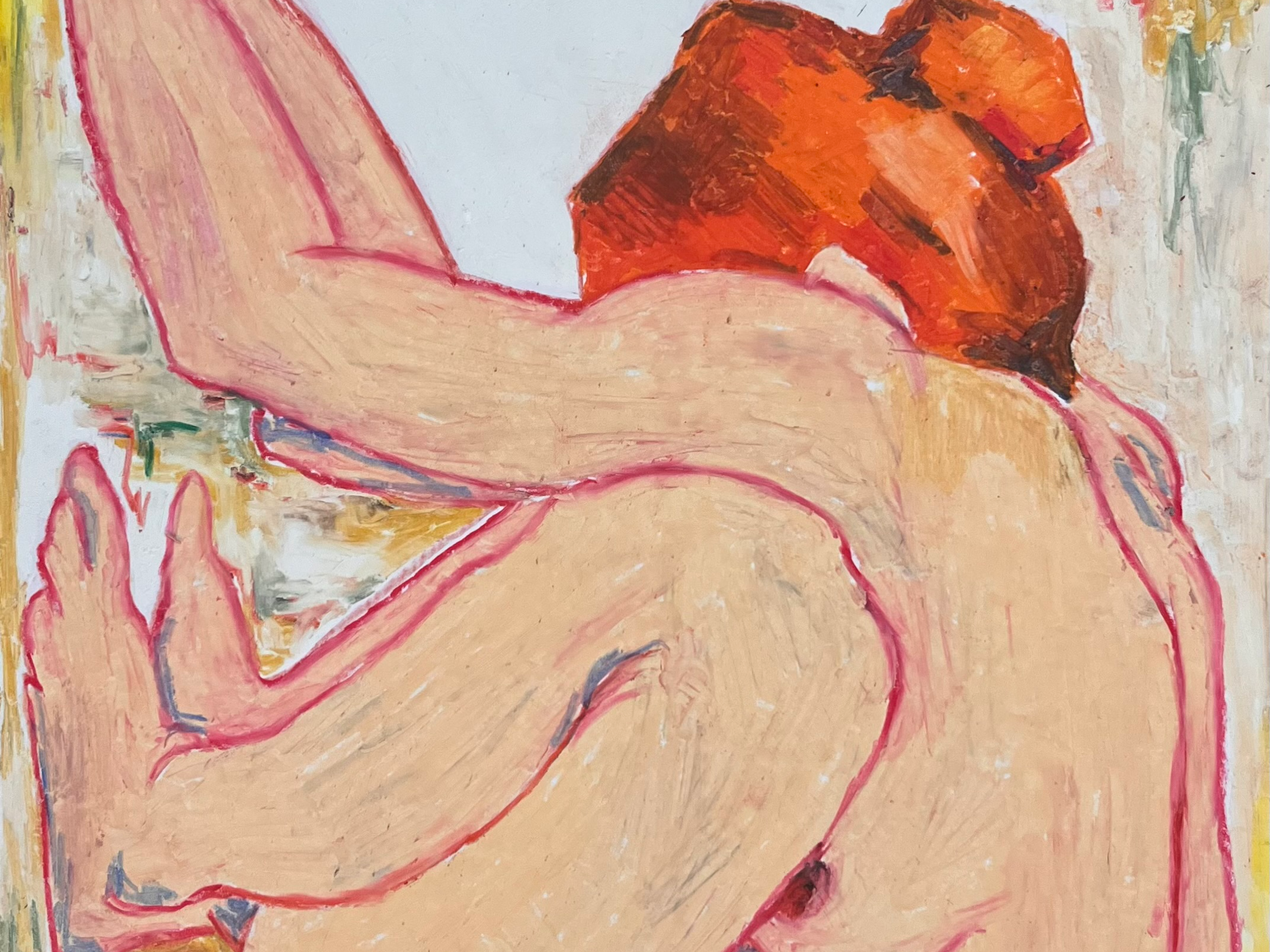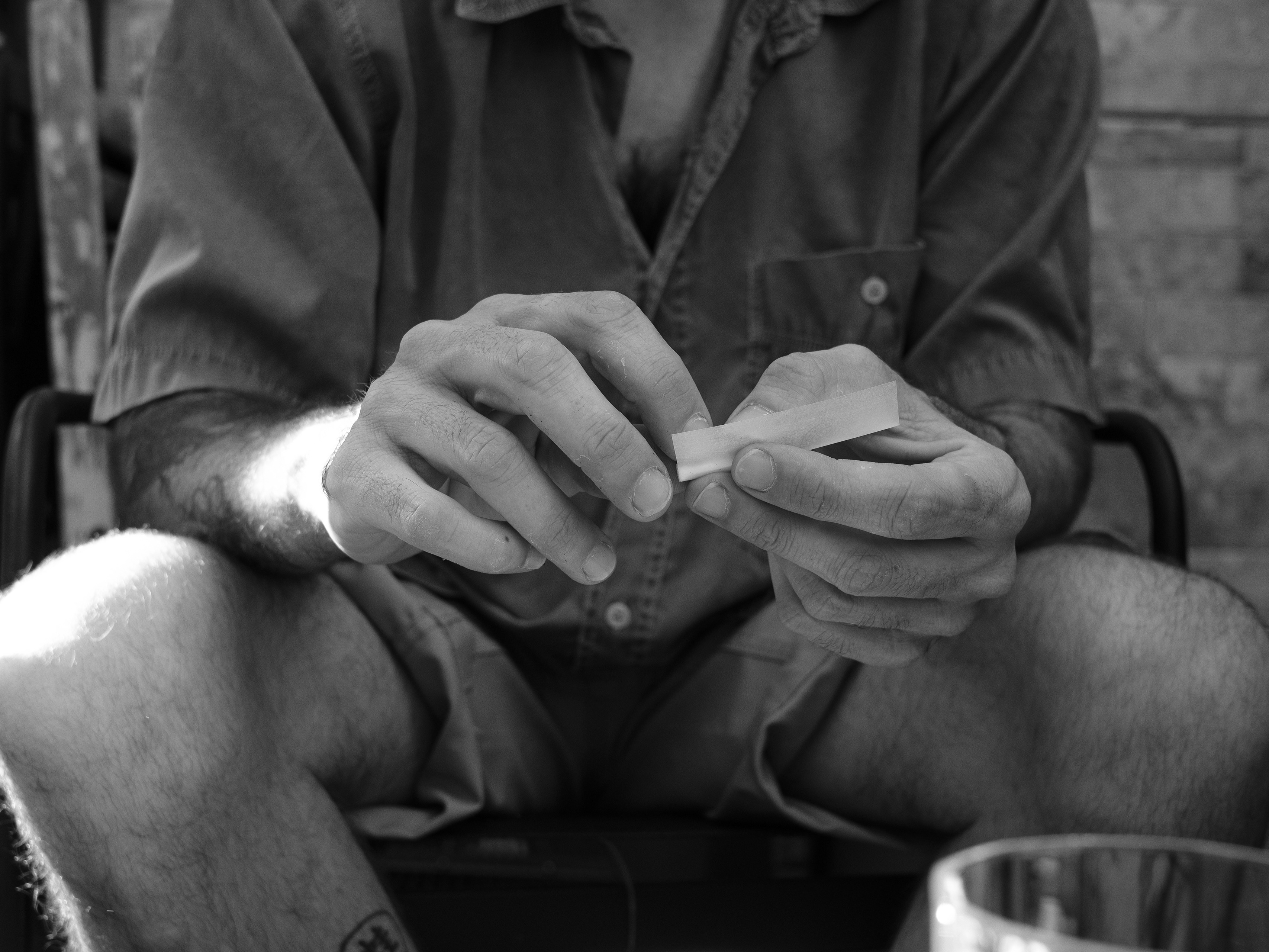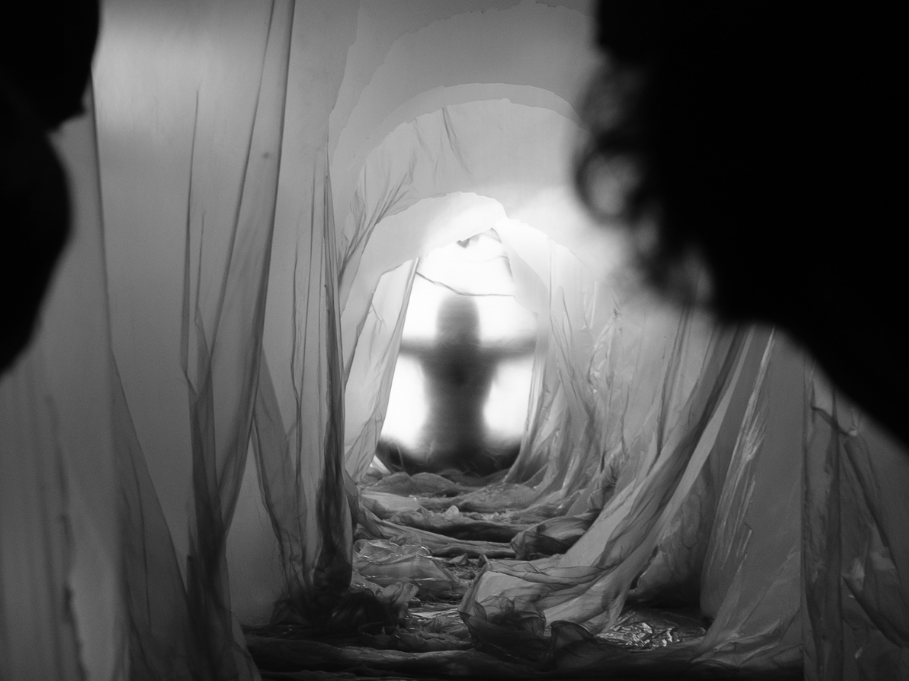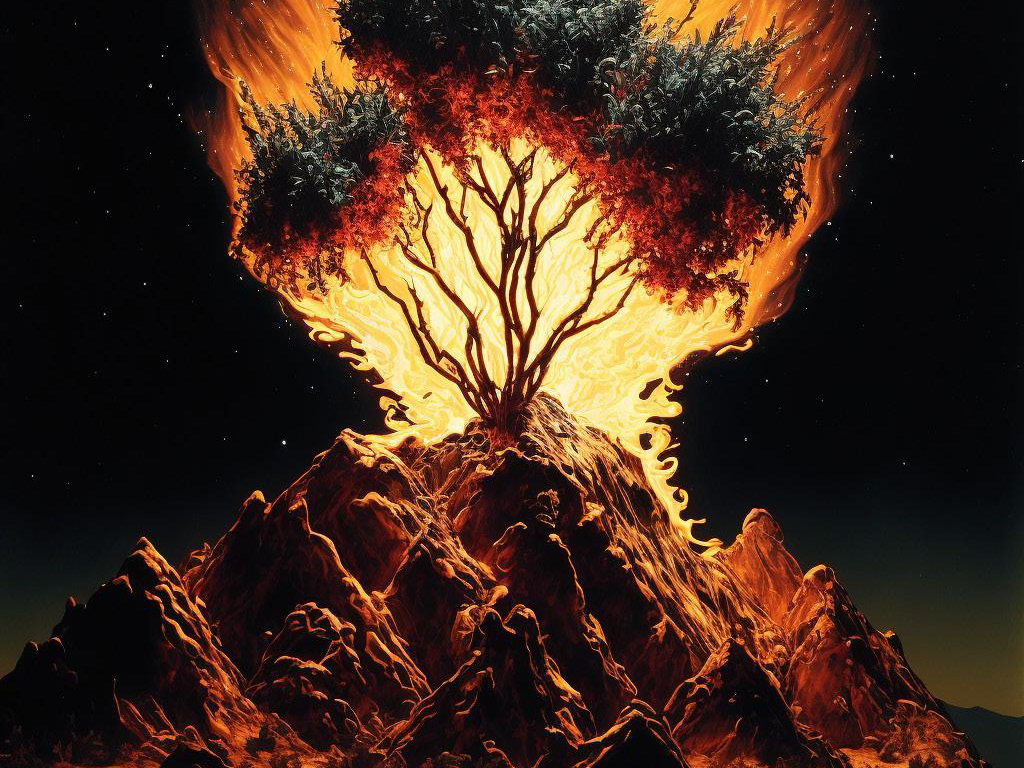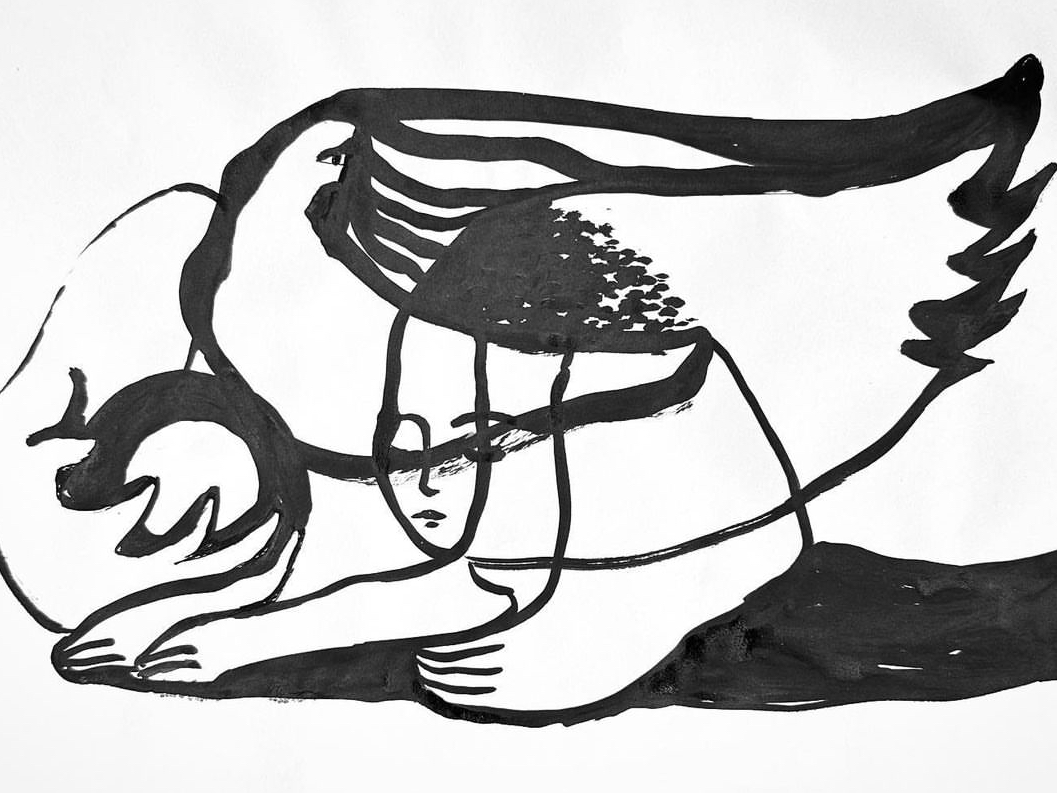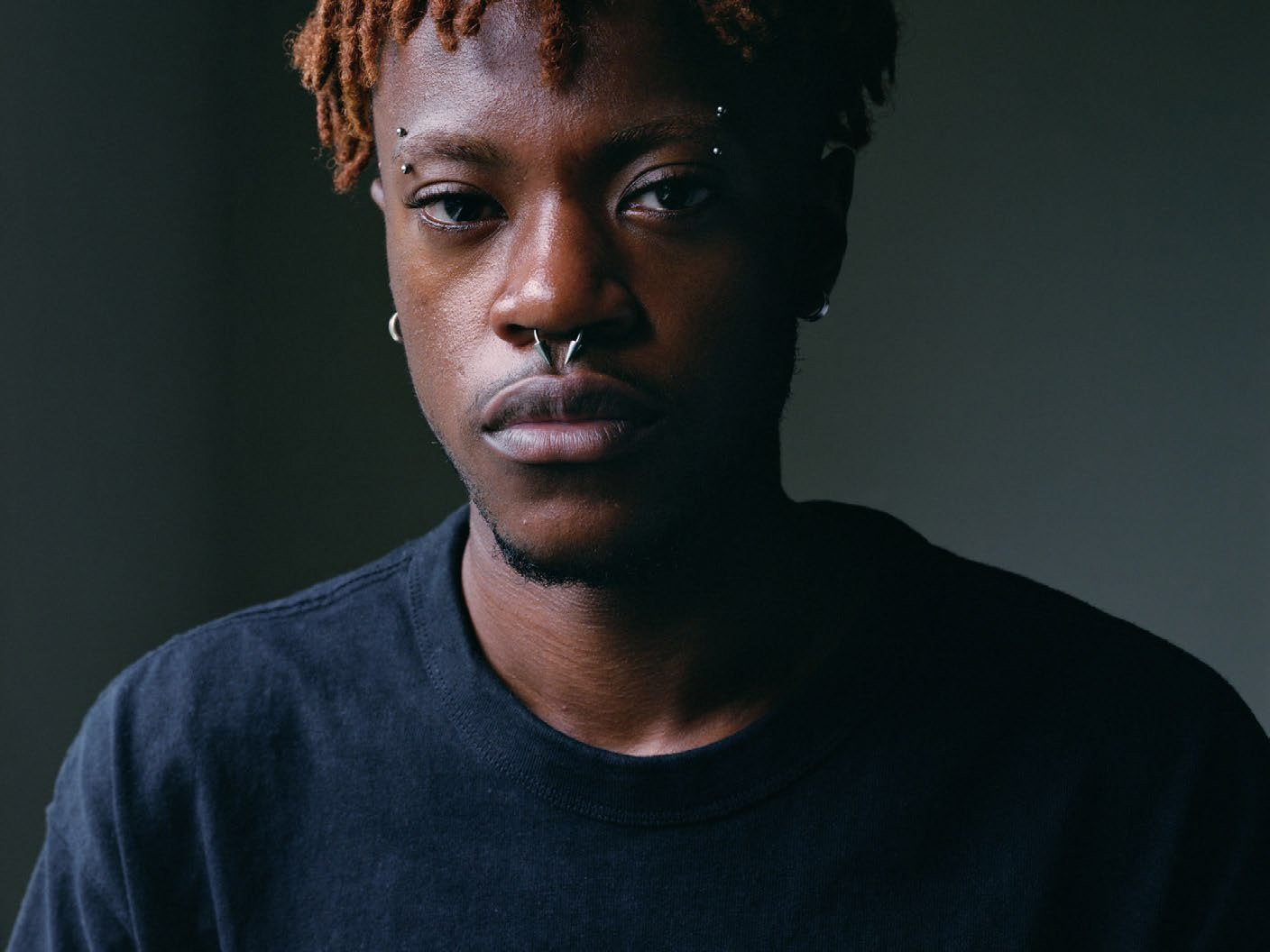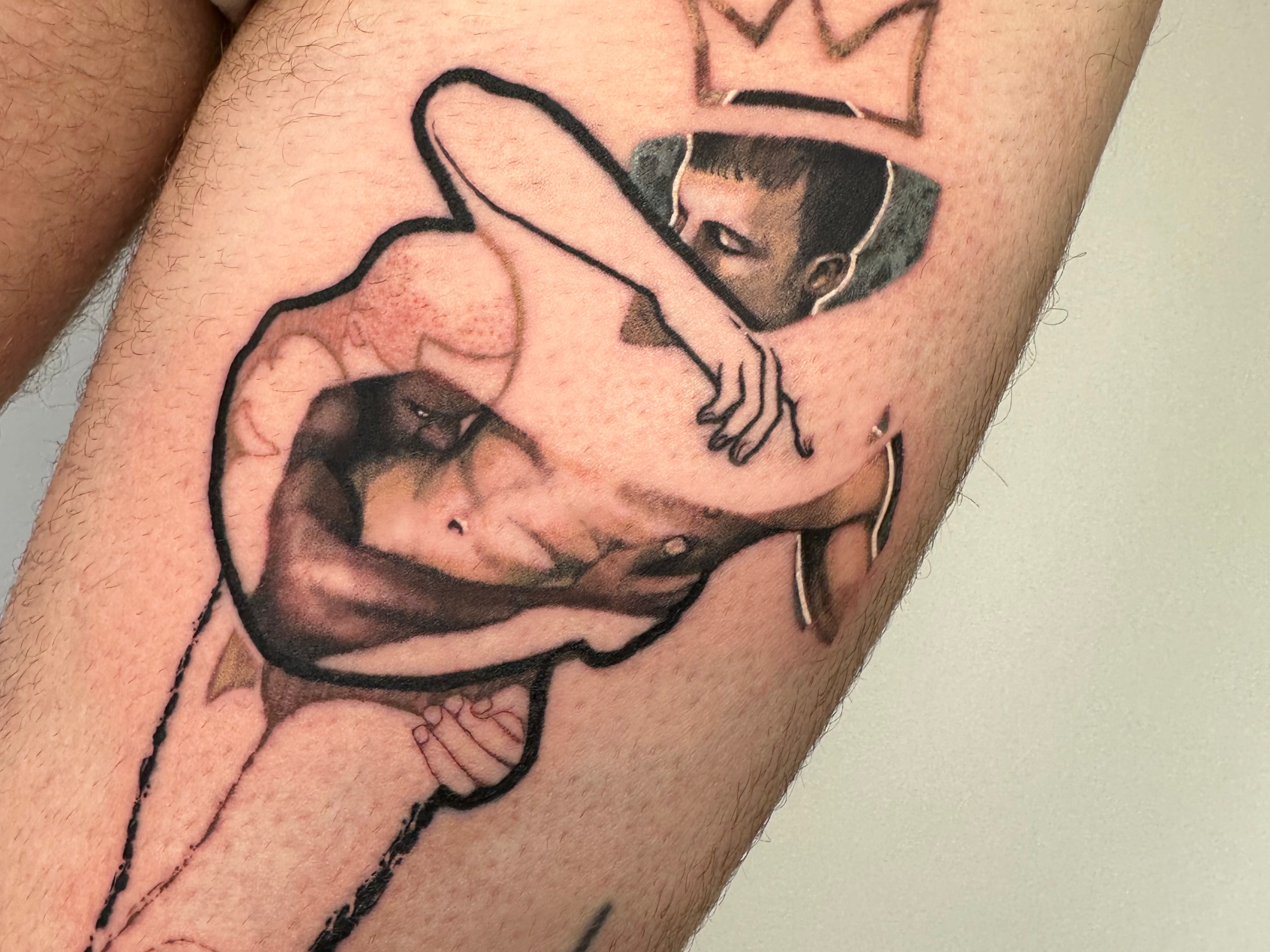Jerusalem Syndrome - Is it a Struggle or a Blessing to be an Artist in the Holy City?
Reported by Anastasia Dolgova
"This city needs therapy." " It is a GULAG for artists," "This is a city of surprises," “Here, you look into the eyes”, "This is our little kibbutz," "It's like you've landed on the Moon." These phrases were shared with me by artists living and working in Jerusalem. Each of them is as different from one another as the population of Israel's capital itself. Jerusalem is a holy place not only for pilgrims and tourists but also for artists who come to study art at the most renowned art academy in the country, Bezalel. I traveled to Jerusalem to explore why it is so challenging to be an artist in this unique city, how the art scene in Jerusalem differs from that of Tel Aviv, and how an artist can avoid catching the Jerusalem Syndrome, which permeates the air and affects everyone who comes to the capital.
Jerusalem is always full of pilgrims: some come to pray at the Western Wall, others to Al-Aqsa Mosque, and still others line up to enter the Church of the Holy Sepulchre. But once a year, at the beginning of August, another center of attraction emerges for those who worship art: the Bezalel Academy graduate exhibition. On opening day, the transparent building of the art academy, resembling an aquarium, fills from top to bottom with hundreds of art pieces, and in front of the Jack, Joseph, and Morton Mandel Campus, queues of thousands of people from all over the country form, eager to dive into the world of art for one evening. The atmosphere of this event sharply contrasts with everything else happening in the city. The bubble in which artists "marinate" all year opens up to welcome everyone in, only to close again a few weeks later.
Behind Jerusalem's hills, the city's art scene reveals itself in ways that are subtle and often hidden, demanding a deeper search for creativity than its vibrant sister, Tel Aviv.
Artists working in Jerusalem note that art in the city is intimate and requires seeking out. Unlike Tel Aviv, where one can suddenly stumble upon a performance or street art, and graffiti "screams" at you from almost every wall, art in Jerusalem is more hidden, so one must make more effort to find it: for instance, by exploring small alleys and courtyards, asking locals, or wandering through the city at night.
"You can accidentally run into an art piece in Jerusalem, but in general, you need to look for it a little harder than in Tel Aviv," shares illustrator Maya Levy, who recently graduated from Bezalel Academy of Arts. "For example, you can see a lot of graffiti at Mahane Yehuda Market on rolling shutters when all the shops are closed. And it's always a nice, unexpected experience when you find something like this on your way; it usually puts a smile on your face."
Many artists do not see anything wrong with the "hidden" nature of Jerusalem's art; on the contrary, they consider it an advantage that gives the artist community a sense of unity and makes their identity stand out.
"We’ve got a smaller economy than Tel Aviv and a smaller subset of a population with a predisposition to appreciate art," says artist Moshe Shamah, the owner of Studio Shamah, who works with collage and mixed media. "Many Jerusalemites don’t know that they're interested in art yet. Tel Aviv, by comparison, has an oversaturation of art, artists, and art communities, each with its own time, flavor, and style, so you might not fit in everywhere. In Jerusalem, the lack of this kind of apparatus or cultural topography creates an opportunity for artists to band together and make new interesting collaborative efforts, building a culture that doesn't have a preexisting stigma, need, or expectation upon it. In general, I look at this as an opportunity to build community and a movement here in my city, my home. It's filled with chances to grow your art career, especially because people are open-minded to trying something new with you, as they might not necessarily have an artistic vision in mind."
Maya, who dreams of becoming a children's book illustrator, shares that due to the narrowness of the art community in Jerusalem, she feels and receives a lot of support from other illustrators. "The feeling of community here is strong because senior artists support the junior ones. And junior artists support each other. It's like a tiny kibbutz. I like working in Jerusalem for this reason."
However, some criticize the closed nature of the Jerusalem art scene. To some artists, the intimate atmosphere of the Jerusalem art scene seems too impenetrable, making it difficult to integrate into the city's larger art scene.
"I believe that artists and various art groups need to be more open to newcomers," shares Diana Berkov, who recently graduated from Bezalel with a degree in Fine Arts. "At the academy, we're taught to work independently, but in Jerusalem, many artists band together and work in groups, and it's very difficult to break into their circle — they only accept those they know well. As I see it, being an artist means constantly opening up to new things, which means taking risks and experimenting. That’s why I believe it’s important not to close off but rather to pay attention to young artists. Sometimes it seems easier to get into an exhibition in Europe than to become part of the high-level Jerusalem art community.
Even so, we need to acclimate, like plants to different conditions, and get used to how the art scene functions here. If we don’t, we won’t survive as artists in Jerusalem. Nothing in the world stands still; we need to keep moving too."
Nevertheless, there are also advantages to this "hiddenness." Artist Asi Belisha, who speaks out on issues affecting the queer community in Jerusalem, believes that the underground nature of Jerusalem's queer community gives the art born within it depth, authenticity, and genuineness. This fosters a real struggle to be seen and make one's voice heard.
"I’m a fighter by nature," says Asi. "My mom was born in Morocco, and as someone from an Arabic country, she always taught me that life is a struggle. So, I feel the struggle as a person who is not white, who is queer, and different from the majority in Jerusalem, and this is also reflected in my art. For example, let's compare the drag scene in Tel Aviv and Jerusalem. It's like rap; those cultures came from struggle. When I hear a rap song, I want to feel the childhood of the singer. If he sings about it, I want to be moved by it. So in Tel Aviv, I'm not always moved because there is a high level of drag or art scene, but it's also very detached sometimes—from the roots, the intention, the core of it all. And here in Jerusalem, it's connected all the time. I think underground makes you closer to the ground. Things here are more real, more fierce for me. In my art, I talk about gender, about queer struggles. Asking hard questions in Jerusalem is not mainstream because we are so different here. And I feel my struggle here to be myself. That’s why I like living and creating in Jerusalem."
If in the past, Bezalel graduates rushed to Tel Aviv after finishing their studies, now more and more people prefer to stay and contribute to the development of the local art community. What else inspires artists in Jerusalem?
Perhaps this city, with its nearly 5,000-year history, allows them not to forget who they are and offers a chance to look within themselves and see themselves as part of it.
"In Tel Aviv, I can easily forget that I'm Jewish. And in the capital of Israel, even if I'm the most secular girl, I will remember that I'm Jewish, and I will feel it more strongly than in Tel Aviv," shares photographer Eden Degany. "I feel the roots more when I'm in Jerusalem."In her art, Eden reflects on the theme of femininity by photographing women of different ages and body types, capturing the feminine essence beyond beauty standards. In her photo project "Gefilte," she showcases a woman with traditional Jewish dishes. Openly and boldly.
However, it is not necessary to pit the two cities and their art worlds against each other, says Moshe Shamah: "In some capacity, I see us as creative ambassadors building a project in Jerusalem, starting from a more baseline position as opposed to starting from a very vibrant, healthy, and present art community like you have in Tel Aviv or even somewhere like Tzfat, for example.Our role here is not only to create an internal dialogue within the city and bring people here together, but our goal is also to bring people from places like Tel Aviv to have a dialogue together as artists and creators. I don't see the art field as competitive; I see it as collaborative. We're working towards the expression of not only our own souls, but of the place we live in. And in some capacity, I think that beautiful things are on the horizon because I slowly see that the Tel Aviv art world and the Jerusalem art world are reaching across the aisle and starting to communicate with each other more and more."
Works like Eden Degany's may face certain limitations in a city where a large number of religious people from different faiths reside. Among the Jewish population alone, 60% in Jerusalem are religious, not to mention representatives of other faiths. Sometimes, artists encounter rejections and misunderstandings from religious individuals, although this is not always the case.Illustrator Maya Levy, who often responds to open calls from the Jerusalem City Council, admits that sometimes she may not even notice that she submitted something that might not pass "censorship" on official platforms."I once presented a poster with a naked woman in it, and I didn't even pay attention to it myself because the naked woman inside the poster was so tiny—maybe 10 centimeters long," says Maya. "I didn't even think about it, and the City Council decided to remove this poster. Luckily, I had another illustration, so it was accepted into the exhibition. It was funny, but it's a given reality, so I can either go against it and make room for myself, or I can see who's around, so this is kind of a compromise."
Maya adds that to discuss things like nudity or femininity in public spaces, one must be very gentle and subtle. Bezalel, where she studied, is another story: there, an artist can display whatever they want, discussing different topics and presenting them in a more open-minded way."There is indeed a struggle to maintain a balance, to make the point you want to make and express in the way you want without it being deemed too vulgar," adds Moshe Shamah. "If your audience is strictly Jerusalemite, you might need to discuss the subjects you'd like to in a more careful way, in a way that's not as obvious as what you could do with the Tel Aviv crowd or in Berlin or New York, for example. My primary professional medium is mixed media and collage. So this subject and this medium is certainly a little more challenging to introduce to a more conservative crowd, but I've found that people are very receptive. They just have to be shown that it's something they could be interested in because the city, on one side, is not known for being an art scene like Tel Aviv is, but on the other hand, it's a little more open-minded than you'd think."
Thus, some artists choose compromise and some choose to become underground, but they do not always face misunderstandings. Such a case happened with Eden's project "Gefilte" when it was exhibited in Barbur Gallery. "Before the entrance to the hall where my project was displayed, there was a warning that there was nudity," she shares. "I guess it wouldn't be necessary in Tel Aviv, but in Jerusalem, things are more restricted, so it's a must. And then I remember the moment when I was outside the gallery and spotted an Orthodox couple walking into the room with my 'Gefilte' photo project. They spent some time there, and when they walked out, their faces looked just… Normal! They didn't run away, and their curiosity made me happy. I was glad that I could talk to people like them too through my art."Olim Hadashim artists view the ancient city with fresh eyes and bring a new vision that differs from those born and raised in Jerusalem or at least in Israel. Ivan Korbin, who immigrated from Moscow in 2022, soon enrolled in the master's program at Bezalel. Recently, Ivan has focused on figurative art, portraits, and depictions of people. This was something he missed when moving to Jerusalem, where he initially felt very lonely, both personally and creatively. Since it is not customary in Orthodox Jewish tradition to depict people, as it is considered "creating an idol," Ivan noticed that images of people are much rarer in urban spaces here than in other cities.
"You can walk through Jerusalem, especially in religious neighborhoods, and see that images of people are covered up. Except for the Lubavitcher Rebbe, of course," Ivan explains. "So when, after October 7th, the city literally 'exploded' with portraits of hostages, it was very unusual to have so many faces looking at you from the city's walls. Sometimes these faces are covered up (especially those of women). It's sad to think about because these people haven't been returned from captivity yet."
The immigrant artist shares that he loves drawing portraits in the city, but often encounters misunderstandings from locals who turn away or leave when they see him drawing them in public transport. However, this doesn't happen 100% of the time. Once a week, Ivan travels to classes with the famous Russian illustrator Viktor Melamed, another new immigrant who teaches courses in Tel Aviv.
"Viktor Melamed's classes are all about the continuous search for the living, including through portraits," Ivan says. "I see now, against the backdrop of a radicalizing young society and society as a whole, how conflicts flare up in unexpected places. For example, what happened recently in the UK—(anti migrant protests—ed.) is accumulated anti-empathy. And I believe that the task of an artist is to be a communicator who speaks not only in visual language but also in a common language understandable to all. Because this is direct communication and an opportunity to see another's perspective and question one's own. I see this as the task of art, including figurative art."
In the context of people's disconnection, conflicts, and misunderstandings, Ivan is interested in the topic of disinformation. He expressed this in his site-specific work “Mamilla’s Secret”, created within the context of the abandoned ancient Muslim cemetery Mamilla, which was built during the Crusades.
"At Bezalel, we were given the task of finding a 10x10 meter space in the city and 'unearthing' some non-trivial questions that bother you or society," Ivan explains. "I chose this abandoned cemetery to talk about disinformation. There are countless people from different eras buried there: Muslim warriors, religious figures, crusaders. So, this cemetery is ArabChristian, which is unusual in itself. However, during the Six-Day War, the burial site was in a combat zone, and afterward, it remained abandoned. After the war, the state and the city authorities promised to maintain the cemetery with respect and preservation, which did not happen. Now, one part has been turned into a parking lot, and another part hosts a controversial and scandalous project of the Museum of Tolerance, which remains empty no matter how often I visit. Despite its many cultural and historical layers, there is still not a single plaque near the cemetery to tell even a part of the history of this remarkable and meaningfilled place."
Ivan studied the history of this cemetery and, with the help of AI and film technology, integrated handmade ceramic pieces inspired by ancient Iranian sculptures of people in blue ceramic, thus bringing life back to the abandoned burial site. Iranian ceramics, Ivan notes, are a tangible proof that the East has anthropocentric roots in art.
"I wanted to convey that it doesn't matter whether it's figurative or not because we are still talking about people; in the Torah, too, we are talking about people. The fact that our perception changes so significantly when we constantly encounter depictions of people or something humanoid is powerful," Ivan shares.
"Figurative art strongly influences our perception of each other. With this work, I wanted to reconnect us with these ancient people and question the construction of history as a tool. This is a very significant relic that the citizens and tourists know nothing about. Instead of telling the thousand-year history of this place and preserving its history. The place is remarkable on its own: countless flowers bloom there in the spring, and by summer, nature dries up there, and one can simply admire and observe." Ivan adds that figurative art is necessary for Jerusalem because when you don't see a person in the depiction, it feels like "we are in a city that can exist without us too."
Living and creating in Jerusalem is not for the faint of heart; it's a city that demands resilience from its artists, who must find ways to connect with both the city's ancient pulse and its complex modern reality.
"As one of the undergraduate teachers at Bezalel said, 'Jerusalem is a GULAG for an artist,'" says Ivan. "For an artist, especially a free one, it is very difficult in Jerusalem because the city lives by its own laws, which are sometimes unwritten. I can definitely say, having lived in Jerusalem for more than two years, that I have never experienced such loneliness as in this city. Therefore, I would like to thank Bezalel for everything because it gave me a communicative environment where you can share opinions, argue, agree, and be yourself."
In the new immigrant's opinion, for an artist not to go insane in Jerusalem, it is necessary to accept that prayer is an integral part of the city's daily life; to occupy oneself with routine, definitely attend Bezalel to be among one's own, and most importantly, periodically leave the city."If you stay in Jerusalem all the time, you're 100% going to catch the Jerusalem Syndrome," says Ivan. Artists also note that the abundance of flora and fauna helps them find inspiration in Jerusalem and "ground" themselves against the backdrop of the city's intense energy. Diana Berkov's graduation work, "The Essence of Life," was dedicated precisely to this: returning to one's natural essence.
"It's like you've landed on the Moon: everything here is different, unlike other places in Israel," Diana shares. "That's why people are drawn here. I'm very inspired by nature, and in Jerusalem, a very green city, I can connect with it. There is always some kind of confrontation happening here; you constantly see the police, but the nature against which all this happens soothes me and unites the very different people living in this city."
"In Jerusalem, there is something remarkably unique," adds Moshe Shamah. "And when I'm here, in a metaphorical sense, I can feel that the ground is breathing beneath me, that this city is living, that it has a soul, that it has a heart, that it has a will. And I think that anyone who tries to drop the baggage and tune themselves into the city, and open up to what Jerusalem has to offer will be able to feel that as well. While I might not hallucinate that the ground shakes or breathes beneath me like those with the so-called ‘Jerusalem Syndrome,’ there is something special here. There is an aura, an essence around the city that you don't find in other places in our country."
Artist Asi Belisha believes that this city needs therapy. After graduating from Bezalel Academy of Arts, Asi is planning to study art therapy to help people deal with their fears, misunderstandings, and unite.
"I want to bring to the city both: art and art therapy. People here need therapy urgently because they repress everything. There is a lot of misunderstanding between different communities, especially in the older generation. And it's not only that Jews and Arabs do not hear each other; we can see this division even within the Jewish community. There is a misunderstanding between the Ashkenazi and Mizrahi communities (Jews who came from Europe and the US and those who made aliyah from Arabic countries) -ed ; there were not many Jews with darker skin like me studying at Bezalel.
We need to connect with each other more; that's what art and therapy can help with. Because it goes beyond words: art therapy techniques allow you to look deeper and connect with your inner self.Words separate people, while art and therapy unite them, allowing them to talk about difficult things they went through in their lives, scanning their body and reflecting it on paper through lines."
While participating in such a session herself, Asi connected with characters she drew and had conversations with them, connecting to a certain memory she worked with. If you look at her works, you can see that most of Asi's characters do not have a gender; they are humans first of all.
"I'm mainly talking about visually discovering a new way of talking about things and myself, and it opens a whole new world with many layers. You become more aware, and I want other people in this city to experience this. Maybe then, by connecting to ourselves in a deeper sense, we will understand each other better."
Jerusalem’s energy is undeniable, resonating through its streets and seeping into the art created within its walls. To truly understand this city's essence, one must engage with its artists, explore their works, and view Jerusalem through their eyes. The city's influence is profound and inescapable—immerse yourself in it, and you may find yourself subtly drawn into the unique phenomenon of Jerusalem Syndrome, a city that’s spirit leaves a lasting imprint on all who experience it.
Jerusalem Syndrome - Is it a Struggle or a Blessing to be an Artist in the Holy City? was originally published in October 2024 as part of UNHiNGED #4, Who Are You? The full edition is available for physical or digital download on our store.


